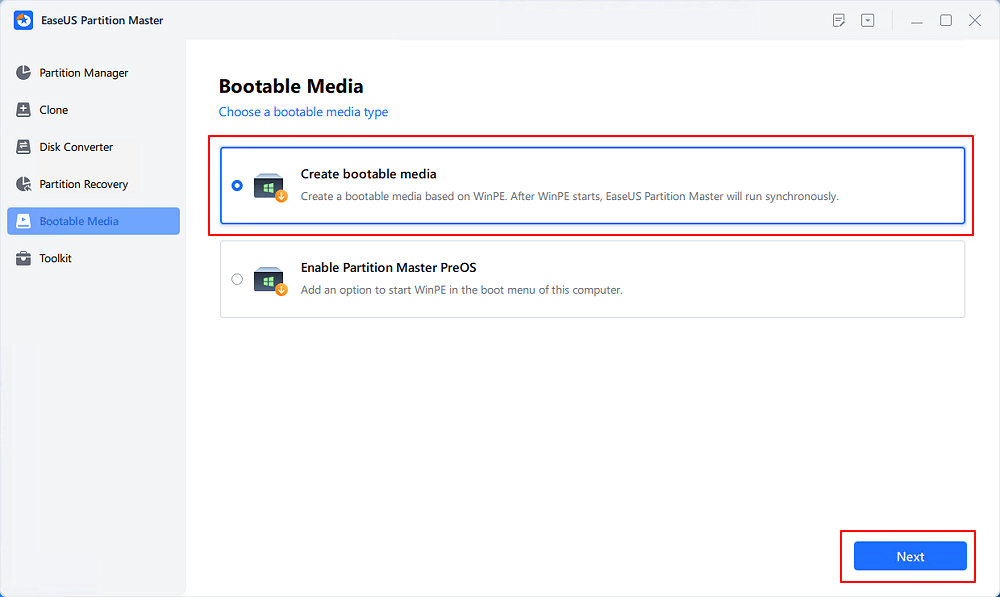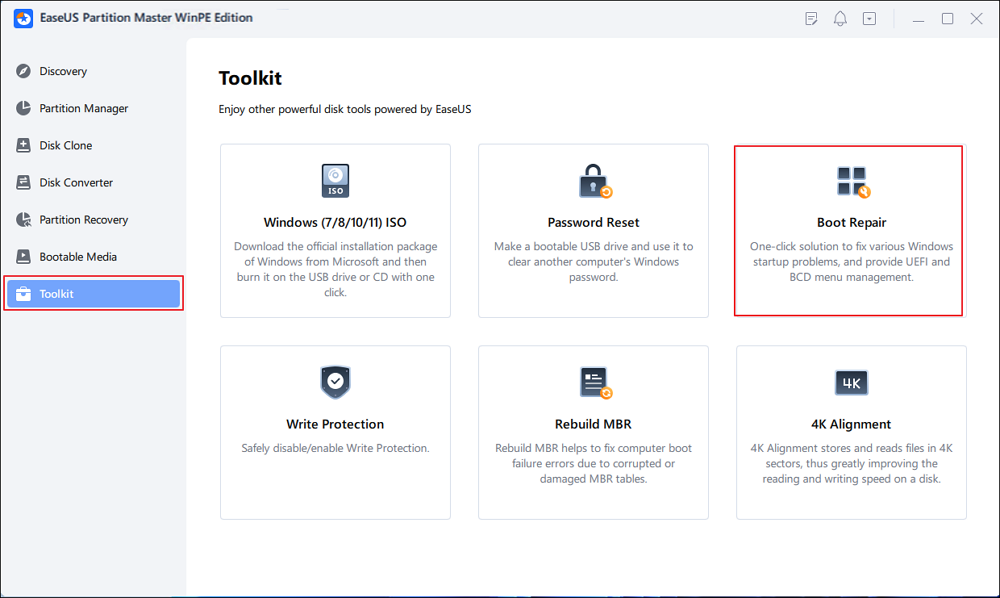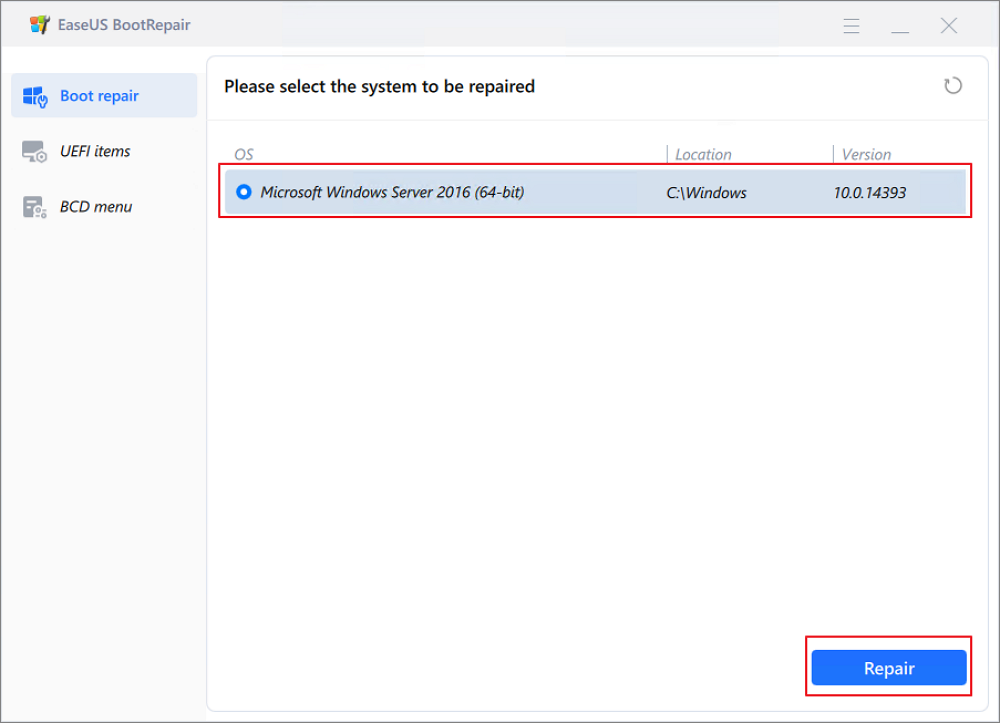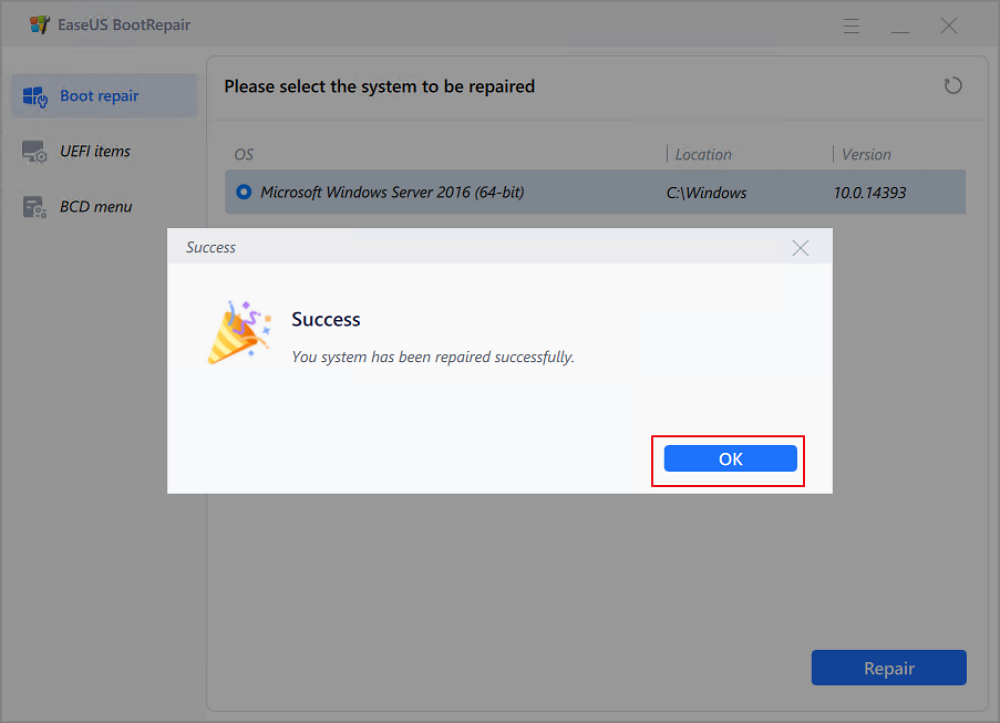Page Table of Contents
How to Solve ASUS BIOS Not Detecting SSD - 5 WaysHOT
Why is ASUS Bios Not Detecting My SSD?HOT
ConclusionHOT
About the Author
Hot Topics
Updated on Apr 28, 2025
- Fix 1. Use EaseUS Partition Master for Boot Repair (easiest way)
- Fix 2. Fix Faulty Hardware
- Fix 3. Run Hardware & Device Troubleshooter
- Fix 4. Format SSD Drive
- Fix 5. Configure SSD Settings in BIOS
Seeing your SSD not detected by ASUS BIOS can be an alarming situation, especially when you rely on it for system booting or data storage. This issue often stems from various causes, such as improper BIOS configurations, outdated firmware, or physical connection problems. Without addressing these issues, your system can remain unresponsive and unstable.
In this article from EaseUS Software, we'll learn How to Solve ASUS BIOS not Detecting SSD, focusing on practical steps to identify and fix the underlying problems. You'll find clear and actionable solutions to ensure your SSD is recognized and your system is back in working order.
How to Solve ASUS BIOS Not Detecting SSD - 5 Ways
When your ASUS BIOS fails to detect your SSD, it can disrupt your work and leave you searching for quick solutions. Below, we'll cover five effective ways to solve ASUS BIOS not detecting SSD. Try these solutions to fix the issue quickly.
Fix 1. Use EaseUS Partition Master for Boot Repair (easiest way)
If you want a quick, easy, and secure way to fix the problem of ASUS SSD Not Detected in BIOS, use EaseUS Partition Master. It's the best tool to manage disk partitions with ease. This software provides a straightforward solution for boot repair and SSD management. Apart from fixing boot-related issues, it also empowers you to perform various actions on your partitions, including resizing, extending, merging, formatting, deleting, wiping, checking, and recovering them.
Advantages of Using EaseUS Partition Master:
- All-in-one solution
- Feature-rich
- Self-explanatory interface
- Safe and reliable
Step 1. Start EaseUS Partition Master after connecting the external drive/USB to your computer, go to "Bootable Media," and click "Create bootable media."

Step 2. Select an available USB Drive or CD/DVD and click "Create." You can also burn the Windows ISO file to the storage media.

Step 3. Connect the created bootable drive to the new computer and reboot the computer by pressing and holding F2/Del to enter the BIOS. Then, set the WinPE bootable drive as the boot disk and press F10 to exit.
Step 4. Boot the computer again and enter the WinPE interface. Then, open EaseUS Partition Master and click "Boot Repair" under the "Toolkit" option.

Step 5: Select the system you want to repair and click "Repair."

Step 6. Wait a moment, and you will receive an alert that the system has been successfully repaired. Click "OK" to complete the boot repair process.

Let's try EaseUS Partition Master to eliminate the chances of failure and resolve errors in one go!
Fix 2. Fix Faulty Hardware
It's also essential to figure out hardware-related issues that hinder SSD detection. By addressing hardware issues early, you can save time troubleshooting software-related solutions later. Here's how to check for and fix faulty hardware:
Step 1. Turn off your computer and unplug it from the power source.
Step 2. Open the computer case and carefully check the SSD's connections. Ensure that the SATA or NVMe cable is securely attached and undamaged.
Step 3. Try switching the SSD to another port on the motherboard to rule out port issues.
Step 4. Test the SSD on another computer to confirm that it functions properly.
Step 5. Replace any faulty cables or damaged components if needed.
Fix 3. Run Hardware & Device Troubleshooter
Windows provides built-in troubleshooting tools to detect and fix hardware-related issues. You can run the Hardware & Device Troubleshooter to quickly identify issues.
Follow the steps:
Step 1. Press Win + I to open Settings.
Step 2. Navigate to Update & Security and select Troubleshoot.

Step 3. Click on Additional Troubleshooters.
Step 4. Select Hardware and Devices and click Run the troubleshooter.
Step 5. Wait and let it find issues/errors.
This automated tool can help identify underlying issues related to SSD detection and suggest fixes.
Fix 4. Format SSD Drive
If your SSD is affected by malware or viruses, it can cause detection issues. You can consider formatting it to fix the issue. However, formatting will erase all data on the SSD, so be sure to back up any important files beforehand.
Follow the steps to format SSD:
Step 1. Connect the SSD to a functioning computer.
Step 2. Press Win + X and select Disk Management.
Step 3. Locate the SSD, right-click, and select Format.
Step 4. Choose the desired file system (e.g., NTFS) and click OK.

Step 5. Confirm the action and allow the process to complete.
Fix 5. Configure SSD Settings in BIOS
Incorrect BIOS settings can often lead to SSD detection issues, and this could be the main reason. Thus, configure the SSD settings in the BIOS.
Follow the steps:
Step 1. Restart your computer and press the appropriate key (e.g., F10, F2, F12, F1, or DEL) to enter the BIOS setup.
Step 2. Navigate to the Boot menu within the BIOS interface.
Step 3. Adjust the SSD settings as needed. The option names may differ based on the manufacturer of your motherboard.
Step 4. Save the changes and exit the BIOS setup.
Make sure to follow this guide to resolve the issue and restore SSD detection. If you found these solutions helpful, feel free to share them with others who may be facing similar problems.
Why is ASUS Bios Not Detecting My SSD?
Understanding the exact causes of the issue can clarify your direction to troubleshoot and solve the ASUS SSD Not Detected in Bios problem more effectively.
So, let's determine the reasons:
Incorrect BIOS settings: Misconfiguration of the BIOS can hinder the proper recognition of the SSD
- Faulty hardware connections: Loose, damaged cables and defective ports lead to problems.
- Outdated firmware: Outdated BIOS or SSD firmware can cause compatibility issues.
- Corrupted or missing drivers: Without proper drivers, the SSD can't be recognized by the system.
- Malware or viruses: Malware can interfere with the SSD's functionality, leading to detection problems.
Conclusion
If you're facing the issue of your ASUS BIOS not detecting your SSD, there are several solutions to try. From checking hardware connections to adjusting BIOS settings, each method can help identify and resolve the underlying issue. However, for the easiest and most efficient solution, we highly recommend trying EaseUS Partition Master. This tool offers a user-friendly process for troubleshooting and fixing SSD detection problems, saving you time and effort.
Give EaseUS Partition Master a try and resolve multiple errors at once!
FAQs About How to Solve ASUS BIOS Not Detecting SSD
Do you have any queries? Check out these FAQs if you are interested in more related issues about ASUS BIOS not detecting SSD.
1. How do I migrate Windows to a new SSD?
Migrating your Windows operating system to a new SSD can be straightforward with the right tools. Here's a simple guide:
- Connect your new SSD to the system.
- Use disk cloning software (like EaseUS Todo Backup) to copy your existing Windows system to the new SSD. Select the SSD as the source disk and your new SSD as the destination.
- Follow on-screen instructions to proceed with the cloning.
- Once the cloning is complete, make sure to adjust the boot order in BIOS so your system boots from the new SSD.
2. How do I get my computer to recognize my new NVMe SSD?
To get your computer to recognize a new NVMe SSD, you'll need to adjust your BIOS settings. Access your BIOS, navigate to the Boot menu, select the NVMe SSD as the primary boot device, and save the changes.
3. How do I enable SSD in ASUS BIOS?
Here's a general guide:
- Access the BIOS.
- Go to Advanced > Storage Configuration or Storage > NVMe Configuration or NVMe RAID Configuration.
- Choose the NVMe SSD you want to enable, and set it to Enabled or Auto.
How Can We Help You
About the Author
Sherly joined EaseUS in 2022 and she has always loved writing articles and enjoys the fun they bring. She receives professional training here, focusing on product performance and other relative knowledge. She has written over 200 articles to help people overcome computing issues.
Product Reviews
-
It won't hot image your drives or align them, but since it's coupled with a partition manager, it allows you do perform many tasks at once, instead of just cloning drives. You can move partitions around, resize them, defragment, and more, along with the other tools you'd expect from a cloning tool.
Read More -
I love that the changes you make with EaseUS Partition Master Free aren't immediately applied to the disks. It makes it way easier to play out what will happen after you've made all the changes. I also think the overall look and feel of EaseUS Partition Master Free makes whatever you're doing with your computer's partitions easy.
Read More -
Partition Master Free can Resize, Move, Merge, Migrate, and Copy disks or partitions; convert to local, change label, defragment, check and explore partition; and much more. A premium upgrade adds free tech support and the ability to resize dynamic volumes.
Read More -
It won't hot image your drives or align them, but since it's coupled with a partition manager, it allows you do perform many tasks at once, instead of just cloning drives. You can move partitions around, resize them, defragment, and more, along with the other tools you'd expect from a cloning tool.
Read More -
I love that the changes you make with EaseUS Partition Master Free aren't immediately applied to the disks. It makes it way easier to play out what will happen after you've made all the changes. I also think the overall look and feel of EaseUS Partition Master Free makes whatever you're doing with your computer's partitions easy.
Read More
Related Articles
-
How to Partition SSD From BIOS [2025 New Guide]
![author icon]() Cici/2025/04/28
Cici/2025/04/28 -
How to Install Windows 10 on M.2 SSD? 2025 Full Guide
![author icon]() Cici/2025/04/28
Cici/2025/04/28 -
How Do I Clone Windows to Another Computer? Your Full Guide Is Here
![author icon]() Tracy King/2025/04/28
Tracy King/2025/04/28 -
[SD Card Unavailable] Fix SD Card Wont Mount on Android & PC
![author icon]() Jean/2025/04/28
Jean/2025/04/28
Hot Topics
EaseUS Partition Master

Manage partitions and optimize disks efficiently








